👀 25,545 TLC-Plated Vehicles Not Affiliated With Uber NYC HVFHS Base
Uber warned they "may need to stop sending ride requests to certain vehicles unless they are affiliated with a HVFHS (High-Volume For-Hire Services) Base". What does that mean & why it's important?
Uber said they may need to limit NYC TLC driver access to its app (“lockouts”) and specifically mentioned importance of HVFHS base affiliation
HVFHS stands for a High-Volume For-Hire Services base license, or platforms that dispatch more than 10,000 for-hire trips per day in NYC
The only companies that have a NYC HVFHS base license are Uber and Lyft
Based on AutoMarketplace analysis more than 25,000 TLC-plated vehicles are not affiliated with an HVFHS base, including many newly licensed EVs
For those of you who read Uber’s email yesterday and/or our article, you may have notice we concluded yesterday’s piece with the following, perhaps quirky suggestion.
“🚨 NYC TLC drivers who work mostly on the Uber and Lyft apps, if your vehicle is not affiliated with either Uber or Lyft’s HVFHS base, we would apply for a base transfer immediately 🚨 (*our opinion*)”
- AutoMarketplace (May 16, 2024)
In Uber’s email (“Important updates to access in NYC”) they bolded the words Non-HVFHS base vehicle waitlist and stated the following.
“Non-HVFHS base vehicle waitlist: We may need to stop sending ride requests to certain vehicles unless they are affiliated with a HVFHS (High-Volume For-Hire Services) Base.”
- Uber email sent to NYC TLC driver(s) on May 16, 2024
Many of you might be wondering what this all means 🤷. It sounds very technical, which in many ways it is. In today’s article we are going to briefly, in as simple terms as possible, explain what we think is going on and why TLC drivers and fleets need to take Uber’s non-HVFHS base warning seriously.
What is an HVFHS Base?
A High-Volume For-Hire Service (HVFHS) base license is required by any company that dispatches more than 10,000 trips per day in NYC
Uber’s HVFHS base is UBER USA, LLC (B03404)
Lyft’s HVFHS base is TRI-CITY, LLC (B03406)
In June 2021, the TLC amended the rules governing High-Volume For-Hire Service licenses, creating the HVFHS base license. An HVFHS base applies to TLC bases that dispatch more than 10,000 trips per day. Only Uber and Lyft currently need this license (although we believe Revel might also need one).
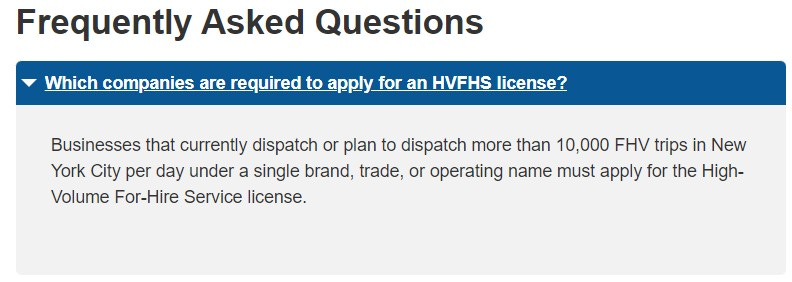
The new rules made the HVFHS “base” license a separate & distinct FHV base license, no longer requiring Uber and Lyft maintain multiple traditional black car base licenses to dispatch NYC trips.
⭐Only HVFHS bases, or Uber and Lyft, are subject to the TLC driver minimum pay rules, including needing to meet utilization rate (UR) thresholds, and also need to abide by the Green Rides Initiative mandate of dispatching a certain number of trips to zero-emission and/or wheelchair accessible (WAV) vehicles.
⚫ All other non-HVFHS black car, livery or luxury limo NYC bases are not subject to either the TLC driver minimum pay rules or Green Rides mandate.
Cross-Base Dispatching Rights
Cross-base dispatching rights is a term often used to describe the ability of a TLC-plated vehicle affiliated with any licensed HVFHS, black car, livery or luxury limo base to accept a NYC for-hire job regardless of what TLC base the job originates from.
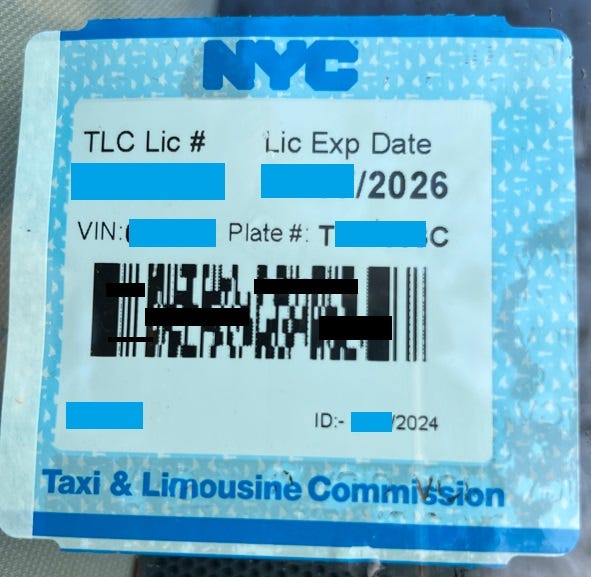
Basically, if a driver’s TLC-plated vehicle is affiliated with a non-HVFHS “traditional” black car base (i.e., Dial 7 or the base TRANS CITY TRANSPORTATION INC, B02711) Uber or Lyft can still send them jobs.
Due to cross-dispatching rights many TLC drivers and fleets never really gave that much importance to what base their NYC for-hire vehicle(s) was affiliated with.
Article continues after advertisement
Why Does It Matter Now?
This is a bit of a complicated question to answer simply, but we’ll try our best. Below, we’ve created a set of simple illustrative examples to provide the necessary context to why we think the base a NYC TLC-plated vehicle is affiliated with, matters now. We’re the first to admit, our understanding could be wrong and if someone knows the technical details better, please correct us in the comments section below.
Here is our basic understanding of how the utilization rate (UR) is calculated.
The TLC officially defines UR as:
Using this definition, let’s use a simple example of a NYC TLC driver being online with both the Uber and Lyft apps, at the same time, for one hour.
During that 60 minute period the following happens:
After waiting for 8 minutes on both apps, Uber sends the driver a trip. The total trip takes them 24 minutes, including 5 minutes en route to pickup the passenger.
The driver then waits another 5 minutes on both apps for their next trip. The second trip takes them 23 minutes, including 10 minutes en route to the pickup.
In summary, during this specific hour time period the TLC driver had a passenger in their car for 32 minutes, spent 13 minutes logged into both apps, waiting and 15 minutes en route to pickup a passenger.
We believe this means the driver had 32 minutes of passenger time / 60 minutes total time online or a 53.3% industrywide UR during this illustrative hour.
Being online with both HVFHS apps (Uber, Lyft), at the same time, is a common driver practice. How the TLC extracts a separate Uber and Lyft standalone UR seems complex. In other words, we’re not sure how the TLC comes up with standalone app URs, given drivers are often online with both apps, at the same time. However, since an industrywide UR is used, as long as a driver is online with both Uber and Lyft, this is a way to ensure when a driver accepts an Uber trip, the TLC is not penalizing Lyft for unoccupied online driver time or vice versa.
This is why the TLC likely wants to use an industrywide UR metric. Many drivers are logged into both the Uber and Lyft (HVFHS) apps, at the same time. We still believe the UR should be dropped altogether, but if the TLC is going to use it, an industrywide UR does make sense because drivers are often logged into both apps, at the same time.
Why Does Having An HVFHS Base Affiliation Matter Now?
With the above context, we can make some guesses as to why Uber stated it might not dispatch to non-HVFHS bases. Using the same illustrative example shown above, this time let’s assume a driver is logged into the Uber app and a traditional black car base app, like Dial 7.
What might cause Uber concern is if a TLC driver is doing a trip for a traditional black car base like Dial 7, but is still online on Uber’s driver app, it’s not immediately clear to us how the TLC is factoring that into Uber’s (or Lyft’s) HVFHS UR math. In the first illustrative Uber and Lyft example, given the metric is “HVFHS” industrywide, as long as Uber knows the driver is most likely doing a trip for Lyft (vs. Uber), it’s probably not as concerning for Uber vs. a driver working for a non-HVFHS base.
Why Is Uber Still Mad At Lyft?
In our opinion, the industrywide HVFHS UR is reflecting the zero-sum nature of the combined duopoly trip market share of Uber and Lyft in NYC. Uber would argue that Lyft is “free riding” off of Uber’s ability to provide drivers more trips. For example, Lyft only has to send a driver one trip every few hours, as long as Uber is keeping the driver busy for the rest of the time. This allows Lyft to keep access to a larger NYC TLC driver supply than it might otherwise deserve on a standalone UR basis.
This is our best guess, but we could be totally wrong 🤷♀️. Perhaps, Uber is just using this moment to get more vehicles affiliated with its HVFHS base as a way to have more control over predicting industrywide UR 🤔.
Importance Of HVFHS Base Transfer
Although we may not exactly understand all the reasons, Uber did state it may “stop sending ride requests to certain vehicles unless they are affiliated with a HVFHS (High-Volume For-Hire Services) Base.”
If you are a NYC TLC driver who works primarily for Uber, and even Lyft, we think you need to take this specific Uber statement at face value. While a large majority (75%+) of NYC TLC-plated vehicles are already affiliated with Uber and Lyft bases, a sizeable minority are not. In addition, there is an unusually high percentage of electric vehicles (EVs) that are not affiliated with Uber or Lyft’s HVFHS bases. This might impact those drivers ability to access Uber/Lyft and also Uber/Lyft’s ability to meet Green Rides requirements related to dispatching to EVs or WAVs.
Based on our analysis of active NYC TLC-plated vehicles, this is how industry base affiliations currently look (as of today - May 17, 2024).
How To Switch Your Vehicle’s Base?
Again, everything we just overviewed is our opinion. However, if you find our logic compelling and your TLC-plated vehicle is not affiliated with either an Uber or a Lyft HVFHS base, you might be wondering how you can complete a base transfer.
Below, we screenshot TLC’s simple base transfer instructions and provide a link to its ‘Base Transfer’ webpage as well. It only costs $25 to transfer your base. The most difficult part of the application is getting in touch with Uber so their representative can sign your transfer application form and also officially submit a base transfer online (Note: Lyft does not appear to be issuing base letters anymore or as readily as Uber) .
We recommend making an appointment or going in person to Uber’s Greenlight Hub in Long Island City. It is located in the same building as the TLC (31-00 47th Avenue, Long Island City, NY, 11101).
If you need any help with your base transfer please reach out to us at info@automarketplace.com.
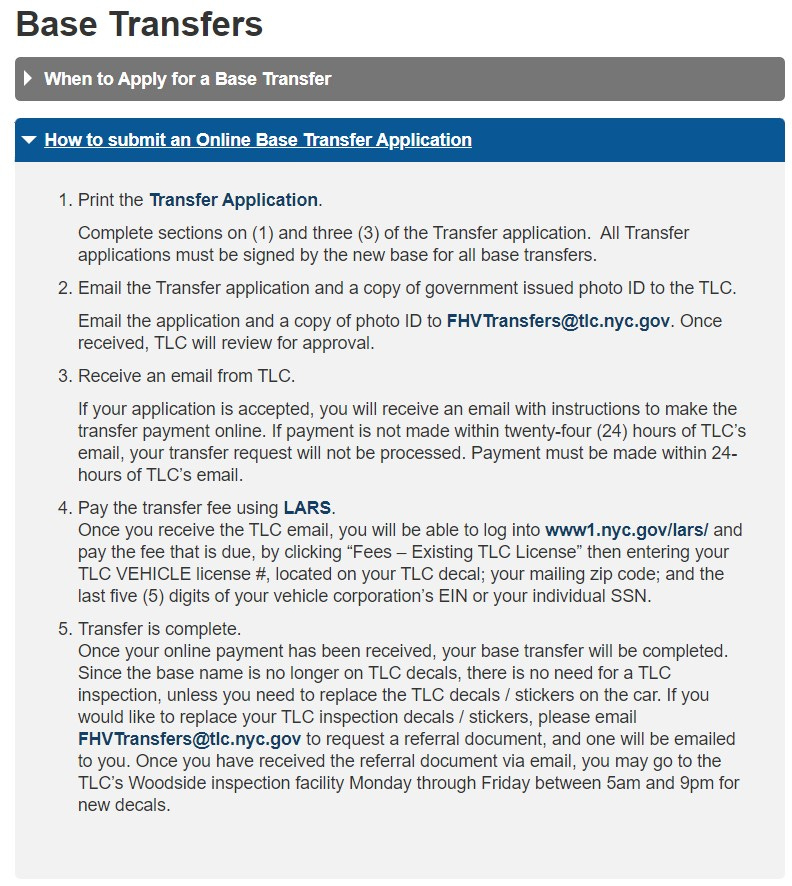




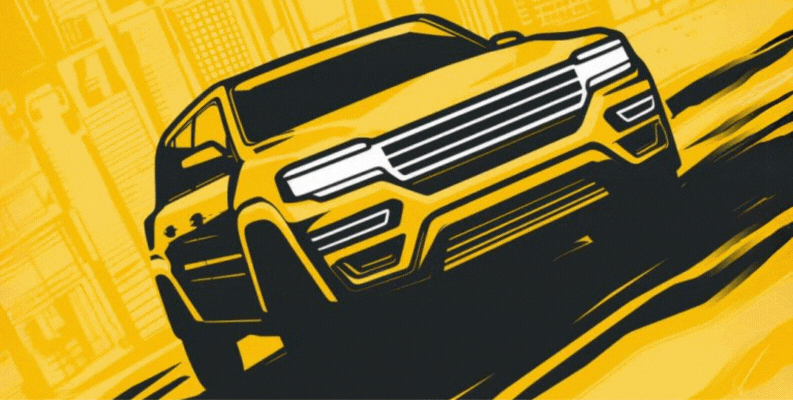
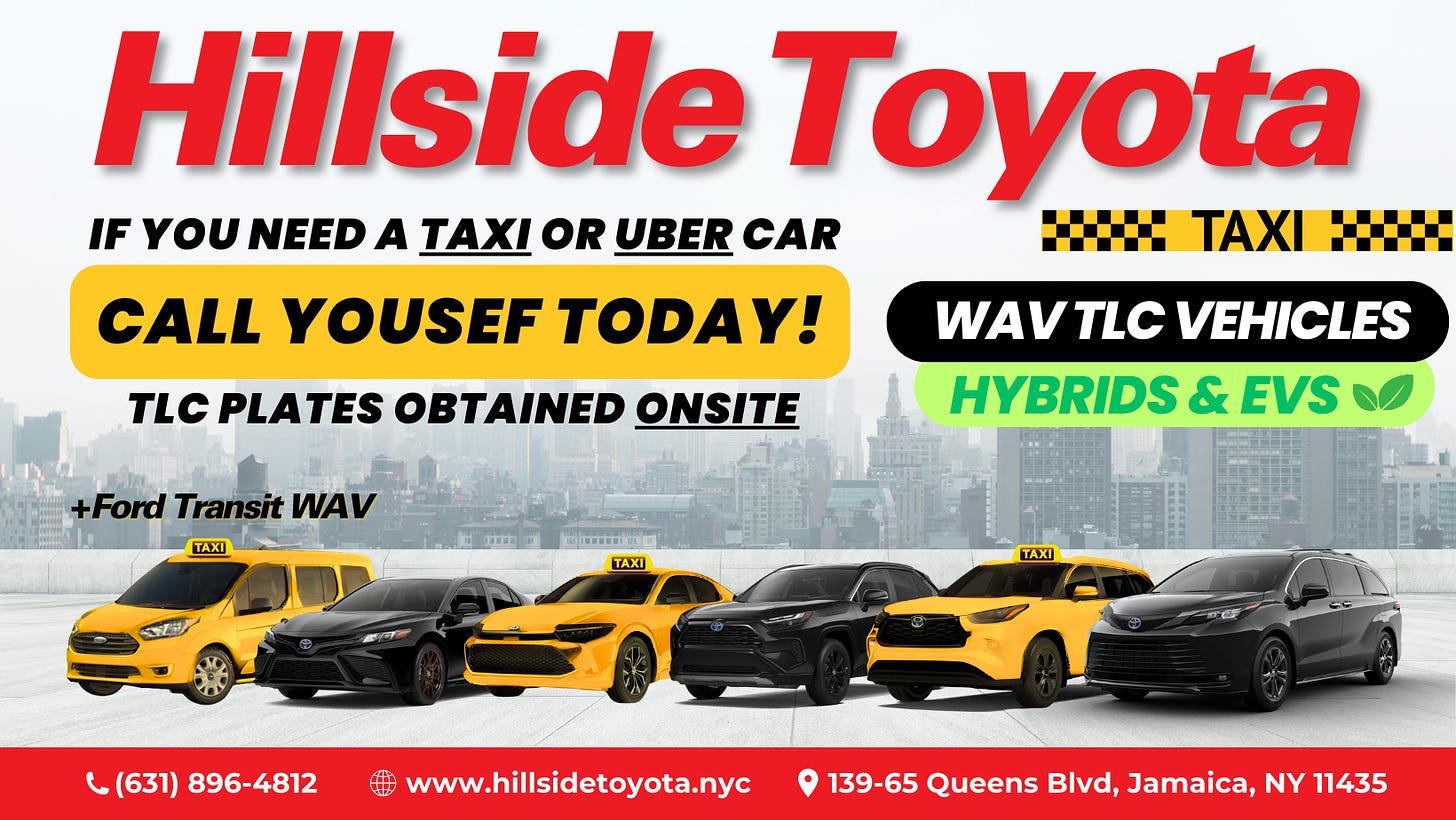

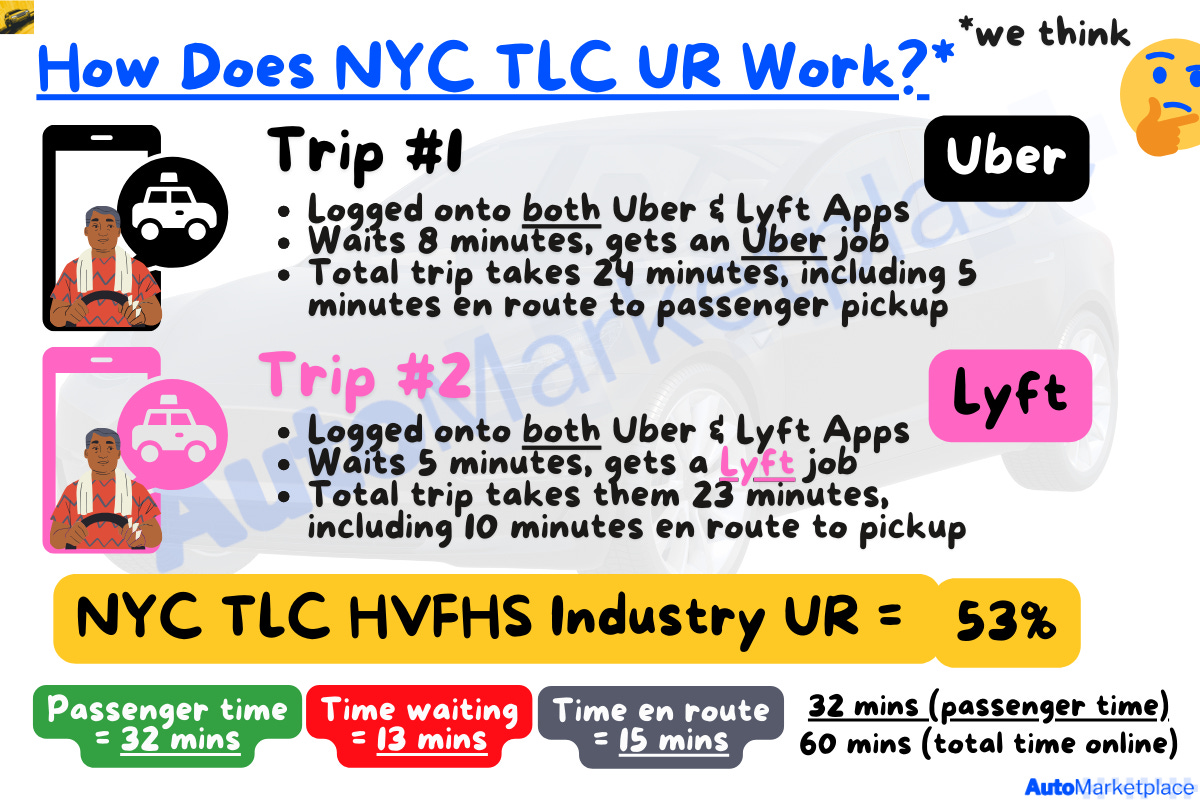
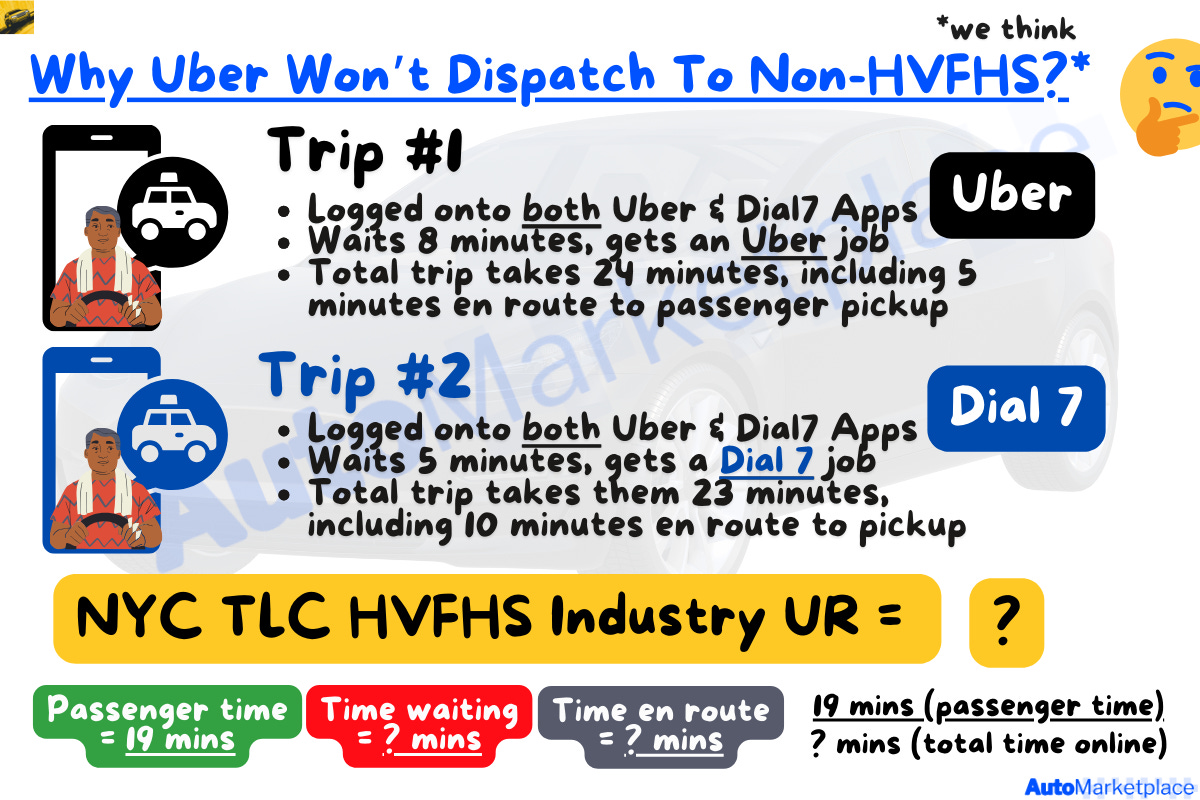
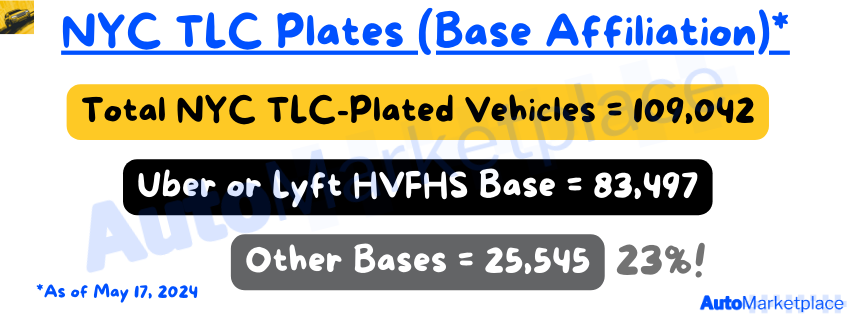
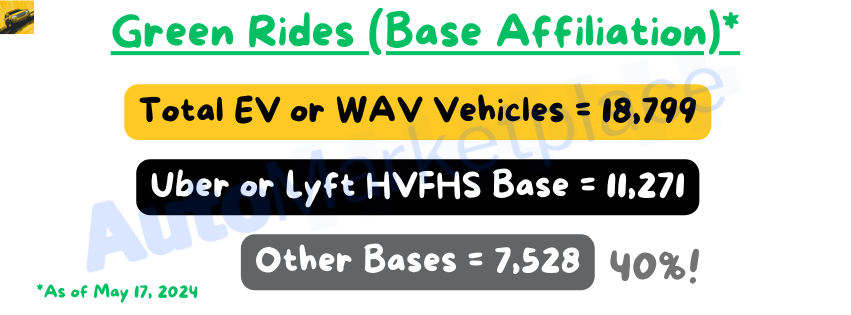
Why weren't these rules made when they started TLC may as well just be abolished at this point Uber should just take over!
Thank you for the metrics and insights of what may happen in the future. I use your newsletter regularly and gain valuable knowledge for my business.